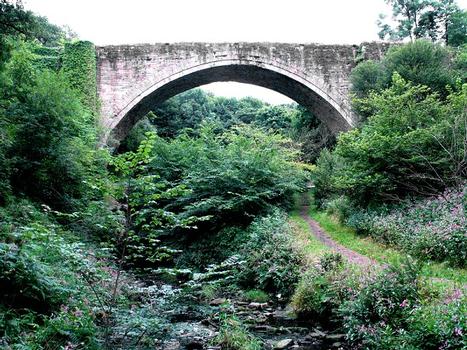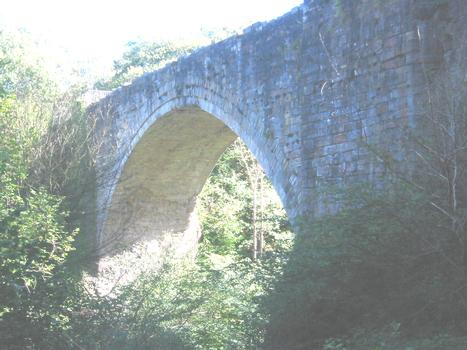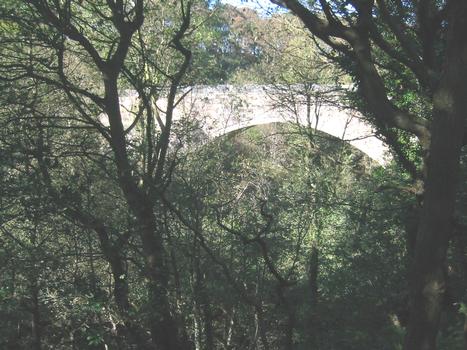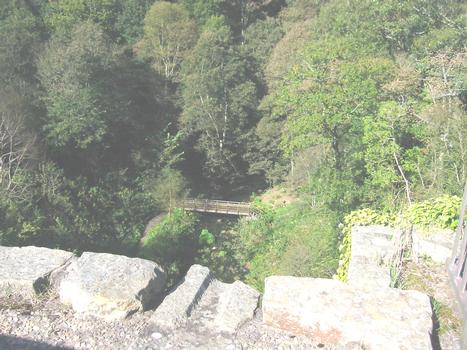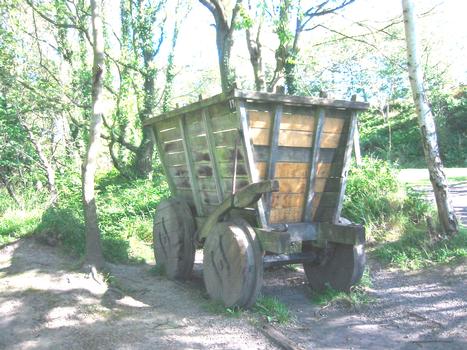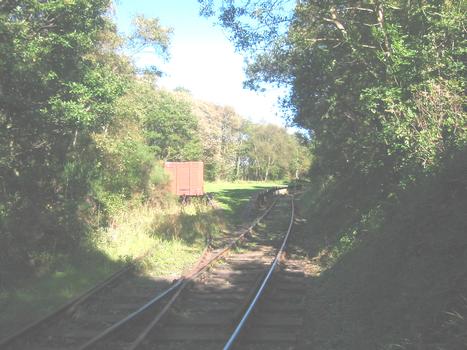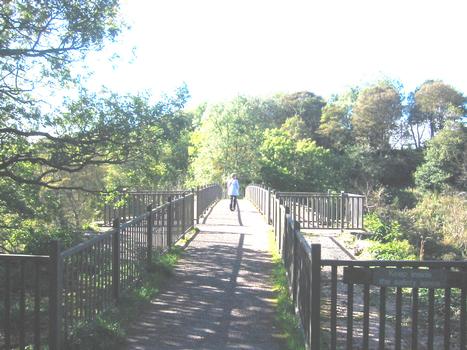General Information
| Other name(s): | Cawsy Bridge |
|---|---|
| Completion: | 1727 |
| Status: | in use |
Project Type
| Structure: |
Vaulted arch bridge |
|---|---|
| Material: |
Masonry bridge |
| Function / usage: |
original use: Railroad (railway) bridge current use: Pedestrian bridge (footbridge) |
Location
| Location: |
Tanfield, County Durham, North East England, England, United Kingdom |
|---|---|
| Coordinates: | 54° 53' 50.60" N 1° 41' 16.10" W |
Technical Information
Dimensions
| arch span | 31 m |
Materials
| arch |
masonry
|
|---|
Excerpt from Wikipedia
The Causey Arch is a bridge near Stanley in County Durham, northern England. It is the oldest surviving single-arch railway bridge in the world, and a key element of the industrial heritage of England.
It was built in 1725–26 by stonemason Ralph Wood, funded by a conglomeration of coal-owners known as the "Grand Allies" (founded by Colonel Liddell and the Hon. Charles Montague and George Bowes the owner of Gibside Estate on which the bridge is situated) at a cost of £12,000. Two tracks crossed the Arch: one (the "main way") to take coal to the River Tyne, and the other (the "bye way") for returning the empty wagons. Over 900 horse-drawn wagons crossed the arch each day using the Tanfield Railway.
When the bridge was completed in 1726, it was the longest single-span bridge in the country with an arch span of 31 metres (102 ft), a record it held for thirty years until 1756 when the Old Bridge was built in Pontypridd, Wales. After he designed the bridge, Ralph Wood was so afraid that his arch would collapse that he committed suicide, but the bridge still stands today.
An inscription on a sundial at the site reads "Ra. Wood, mason, 1727". Use of the Arch declined when Tanfield Colliery was destroyed by fire in 1739.
The Arch has been Grade I listed since 1950. It was restored and reinforced in the 1980s. There are a series of scenic public paths around the area and the Causey Burn which runs underneath it. The quarry near the bridge is a popular spot for local rock climbers.
Causey Burn itself flows into Beamish Burn which then flows into the River Team eventually discharging into the River Tyne.
Text imported from Wikipedia article "Causey Arch" and modified on July 23, 2019 according to the CC-BY-SA 4.0 International license.
Participants
Relevant Web Sites
Relevant Publications
- (1975): The Bridges of Northumberland and Durham. United Kingdom (United Kingdom), pp. 22-23.
- About this
data sheet - Structure-ID
20007801 - Published on:
13/01/2003 - Last updated on:
28/05/2021


